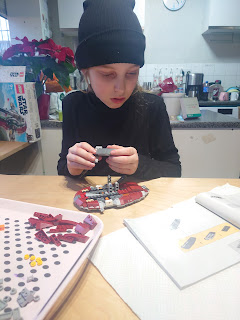Hey readers,
In the fast-paced world of blogging, consistency is key. Whether you're a seasoned blogger or just starting, managing a blogging schedule is crucial for success.
In this blog post, I'll share some practical tips and strategies to help you master the art of blogging schedule management.
1. Set Clear Goals.
Before diving into the nitty-gritty of scheduling, it's essential to define your blogging goals. What do you want to achieve with your blog?
Whether it's growing your audience, increasing engagement, or monetising your content, having clear goals will guide your schedule and help you prioritise tasks.
Consider breaking down your goals into short-term and long-term objectives. Short-term goals could include weekly or monthly targets for blog posts, social media updates, or email newsletters.
Long-term goals may involve reaching a specific follower count, launching a product, or collaborating with other bloggers.
2. Create a Content Calendar.
A content calendar is the backbone of an effective blogging schedule. It allows you to plan and organise your content in advance, ensuring a consistent flow of posts.
Start by outlining a monthly calendar and populate it with your blog post ideas, social media updates, and any other relevant tasks.
Consider using tools like Google Calendar, Trello, or CoSchedule to manage your content calendar.
These tools often provide collaborative features, making it easy to coordinate with a team or keep track of individual tasks.
Allocate specific days for different types of content, such as blog posts, social media updates, and email newsletters.
3. Know Your Audience.
Understanding your audience is crucial for creating content that resonates with them.
Use analytics tools to gather insights into your audience demographics, interests, and online behaviour.
By knowing your audience, you can tailor your content to meet their needs and preferences.
Consider creating audience personas to represent different segments of your target audience.
This will help you craft content that appeals to specific groups, ensuring a more personalised and engaging experience for your readers.
4. Batch Content Creation.
One of the most effective time-management strategies for bloggers is batching content creation.
Instead of writing one blog post at a time, dedicate specific days or blocks of time to create multiple pieces of content in one go.
This allows you to focus on a single task, minimising distractions and increasing overall productivity.
Start by outlining several blog post ideas and then move on to the writing phase.
Batching not only streamlines the content creation process but also provides a buffer of scheduled posts in case unexpected challenges arise.
5. Be Realistic with Frequency.
While consistency is vital, it's equally important to be realistic about your blogging frequency.
Assess your available time, energy, and resources to determine how often you can realistically publish new content.
It's better to commit to a manageable schedule and stick to it than to overcommit and struggle to meet unrealistic expectations.
If you're just starting, consider a bi-weekly or monthly posting schedule and gradually increase frequency as you become more comfortable with your workflow. Quality should always take precedence over quantity.
6. Leverage Automation Tools.
Save time and streamline your blogging tasks by incorporating automation tools into your workflow
Social media scheduling tools like Buffer, Hootsuite, or Later can help you plan and schedule your posts in advance, ensuring a consistent online presence without the need for manual updates.
Additionally, consider using email marketing platforms like Mailchimp or ConvertKit to automate your newsletter distribution.
Automation tools can handle routine tasks, freeing up more of your time for content creation and engagement with your audience.
7. Prioritise Engagement.
Blogging isn't just about creating content; it's also about building a community.
Allocate time in your schedule for engaging with your audience through comments, social media, and other interactive channels.
Responding to comments, participating in discussions, and acknowledging your audience's input fosters a sense of connection and loyalty.
Set aside specific blocks of time each day or week for engagement activities.
This not only strengthens your relationship with your audience but also helps you stay attuned to their preferences and feedback.
8. Learn to Delegate.
If your blog has grown to the point where managing everything becomes overwhelming, it might be time to delegate tasks.
Whether it's hiring freelancers for content creation, a virtual assistant for administrative tasks, or a social media manager for online promotion, delegating responsibilities can help you focus on your strengths and core aspects of blogging.
Clearly define roles and responsibilities, and communicate effectively with your team to maintain a cohesive workflow.
Delegating allows you to scale your blog and take it to new heights without being bogged down by every detail.
Mastering the art of blogging schedule management is a journey that requires planning, flexibility, and a commitment to continuous improvement.
By setting clear goals, creating a content calendar, understanding your audience, and leveraging automation tools, you can streamline your workflow and achieve consistency in your blogging efforts.
Remember that blogging is not just about producing content but also about building a community and fostering meaningful connections with your audience.
Stay true to your goals, be realistic with your commitments, and enjoy the process of creating valuable content for your readers.
With a well-managed blogging schedule, you'll be on your way to success in the dynamic and ever-evolving world of blogging.
Cheers for reading X























